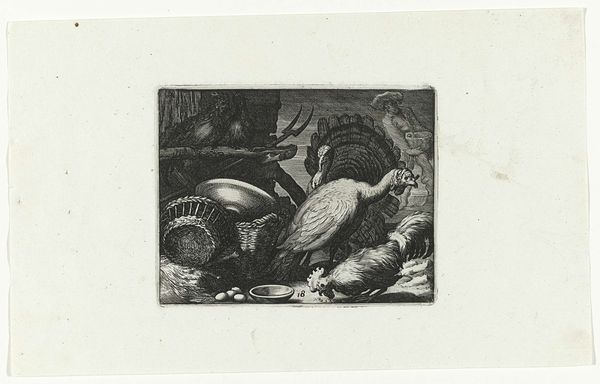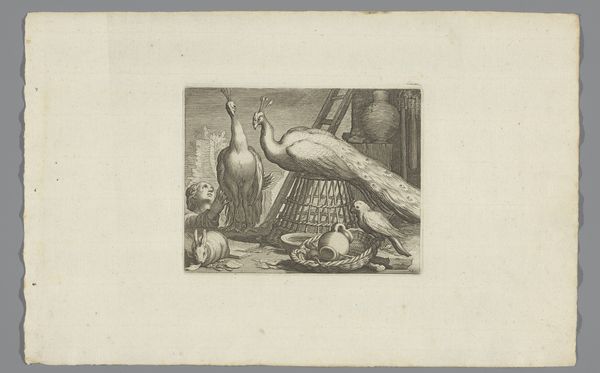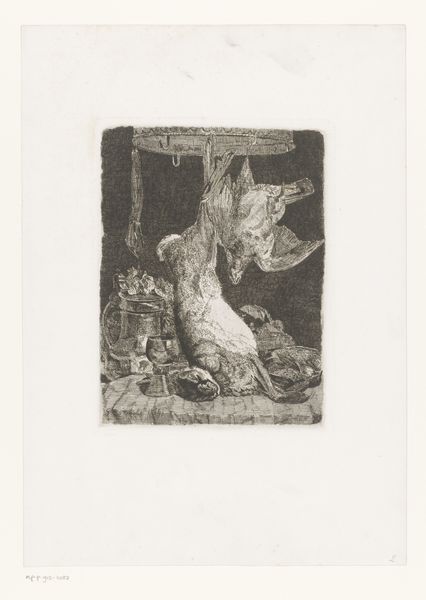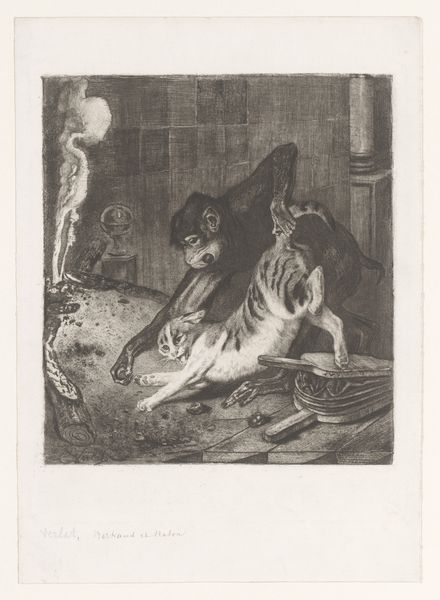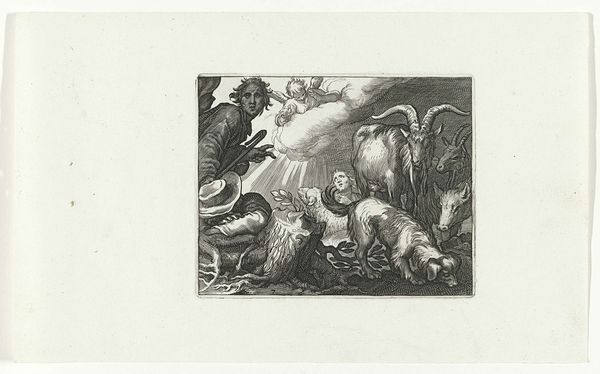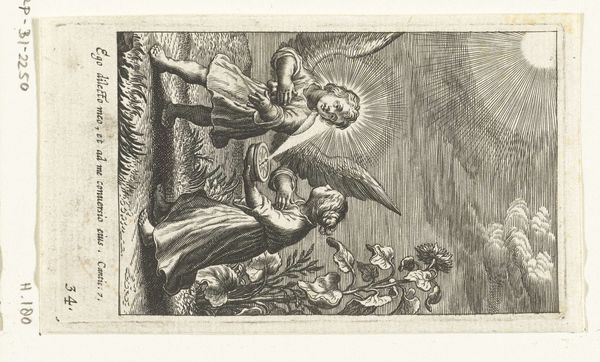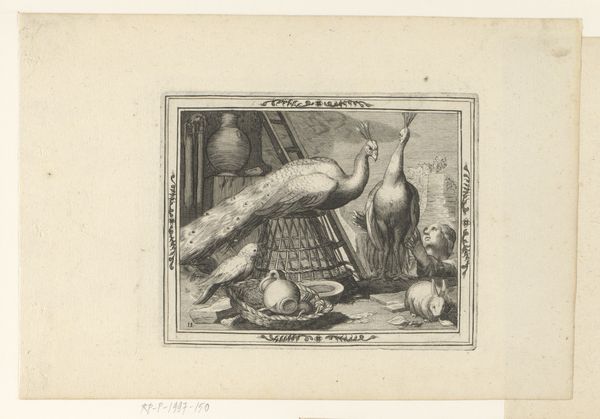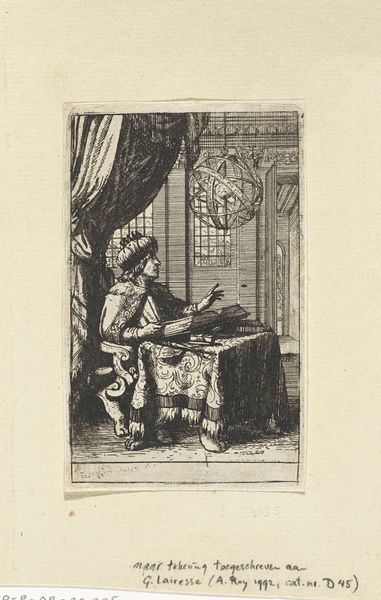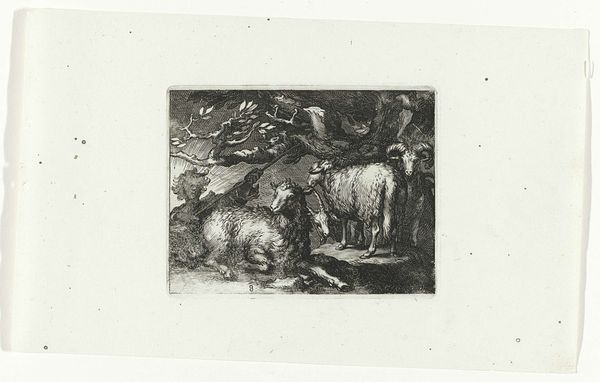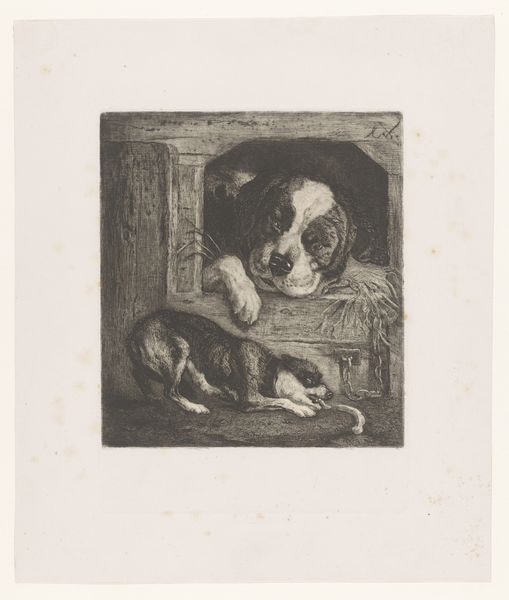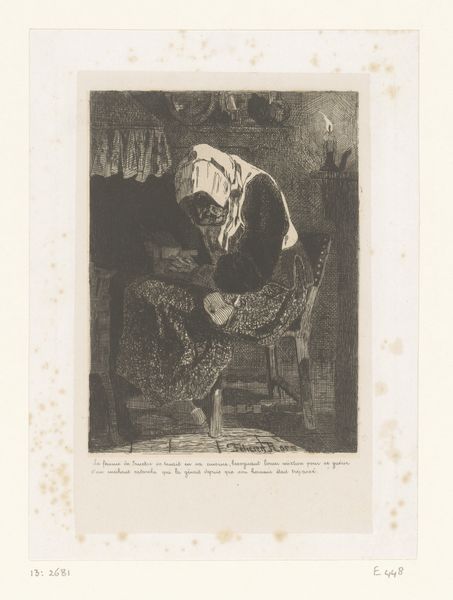
print, etching, engraving
#
narrative-art
#
baroque
#
animal
# print
#
etching
#
old engraving style
#
form
#
line
#
engraving
#
realism
Dimensions: height 112 mm, width 142 mm
Copyright: Rijks Museum: Open Domain
Curator: This is a print called "Pauwen", dating from 1611 to 1650, attributed to an anonymous artist and held here at the Rijksmuseum. The medium is engraving. Editor: Immediately, I’m struck by the intense textures created through line work—it almost vibrates off the page, particularly around the plumage. There’s a tension created between the stillness of the composition and the implied movement of the birds. Curator: Precisely. Note how the line creates shape and volume through hatching and cross-hatching. Observe how form is deployed to create both realism and depth. Editor: But consider the process. Engraving demands planning, patience, and physical labor. The marks etched into the plate—were these by a recognized master or perhaps a workshop hand reproducing an earlier design? These choices inform the final object's value. Look at the varied distribution of detail—the background is much more schematically rendered than the careful depiction of the peacock's feathers. Curator: A key element is how the contrasting textures guide the eye. From the lush plumes to the coarse basket weave, everything is carefully organized, pushing your sight toward the central drama within this confined picture space. Editor: Indeed. We have luxury goods meeting quotidian craft. How was this print consumed? As decoration for an affluent home, or as inspiration for some other artisan, perhaps working with textiles? The availability of prints democratized access to images. How would such detailed depictions influence understandings of the exotic? Curator: Those lines carry significant symbolic weight as well; a study in pure contrasting shapes. Editor: This tiny tableau serves to tell a story about shifting economies and tastes. Its success resided, no doubt, in skillful manufacture, but it reflects cultural currents and material conditions of the era. Curator: I’m particularly moved by the use of stark blacks and whites. This reductive element elevates the composition toward some ideal of purity and austere grandeur, setting off a potent range of expressive possibilities. Editor: Yes, and it seems vital to ask; how does the availability of cheaper mechanically produced copies effect the traditional hierarchies? This image makes me appreciate not just the final product, but also what went into its making.
Comments
No comments
Be the first to comment and join the conversation on the ultimate creative platform.
